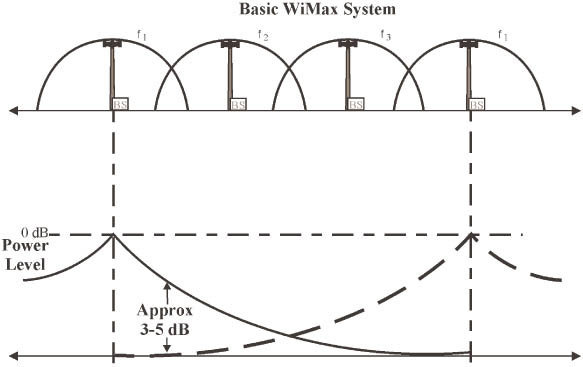Frequency reuse is the process of using the same radio frequencies on radio transmitter sites within a geographic area that are separated by sufficient distance to cause minimal interference with each other. Frequency reuse allows for a dramatic increase in the number of customers that can be served (capacity) within a geographic area on a limited amount of radio spectrum (limited number of radio channels). Frequency reuse allows WiMAX system operators to reuse the same frequency at different cell sites within their system operating area.
The number of times a frequency can be reused is determined by the amount of interference a radio channel can tolerate from nearby transmitters that are operating on the same frequency (carrier to interference ratio).
Carrier to interference (C/I) level is the amount of interference level from all unwanted interfering signals in comparison to the desired carrier signal. The C/I ratio is commonly expressed in dB. Different types of systems can tolerate different levels of interference dependent on the modulation type and error protection systems. The typical C/I ratio for narrowband mobile radio systems ranges from 9 dB (GSM) to 20 dB (analog cellular). WiMAX systems can be much more tolerant to interference levels (possibly less than 3 dB C/I) when OFDM and adaptive antenna systems are used.
WiMAX systems may also reuse frequencies through the use of cell sectoring. Sectoring is a process of dividing a geographic region (such as a radio coverage area) where the initial geographic area (e.g. cell site coverage area) is divided into smaller coverage areas (sectors) by using focusing equipment (e.g. directional antennas).
Figure 1.20 shows how radio channels (frequencies) in a WiMAX communication system can be reused in towers that have enough distance between them.
The radio channel signal strength decreases exponentially with distance. As a result, mobile radios that are far enough apart can use the same radio channel frequency with minimal interference.



No comments:
Post a Comment